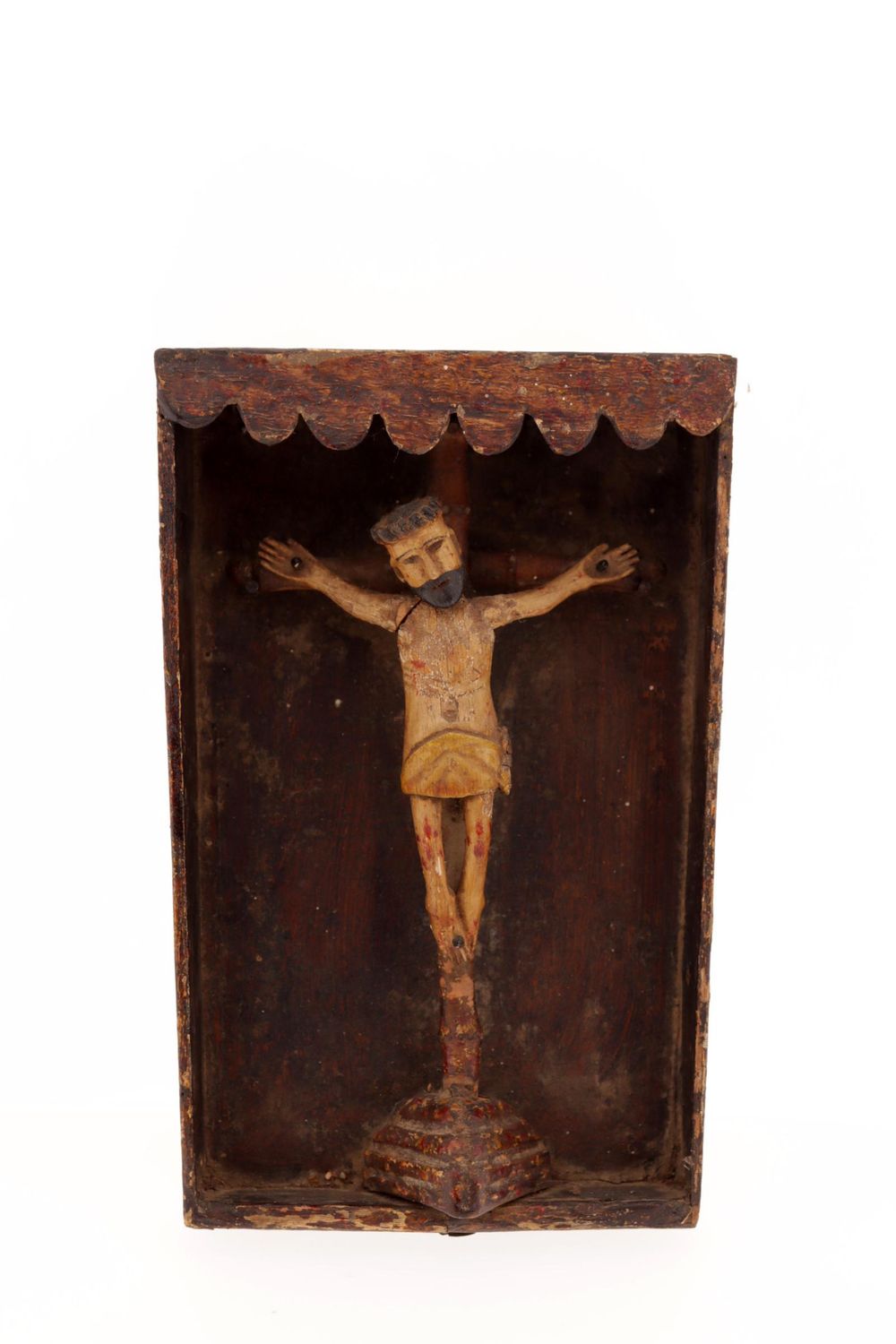18th C. Spanish Colonial Wooden Crucifix w/ Christ
18th C. Spanish Colonial Wooden Crucifix w/ Christ
This piece is an evocative Spanish Colonial period Cristo, expertly hand-carved in wood and originating from Mexico, Latin America, ca. 18th century CE. Presented within a rustic, scallop-edged nicho or shadow box, the figure of Christ stands out for its raw, poignant representation of the Crucifixion.
The central figure is gaunt and elongated, with pronounced outstretched arms and a slender torso—an aesthetic that powerfully conveys both vulnerability and sacrifice. Traces of red pigment mark the hands, legs, and chest, visually narrating the wounds of crucifixion. A simple, faded cloth wraps around His waist, further emphasizing the modesty and humility of the depiction. Beneath Him lies a double-tiered pedestal that anchors the scene, showing wear and patina that speak to the age and devotion lavished upon this devotional image over centuries.
Encased within its weathered wooden box, crowned with a decorative scalloped canopy, this Cristo embodies the fusion of faith and folk artistry typical of New Spain during a period of missionary expansion into the American Southwest. Its tactile, timeworn surface invites both reflection and admiration—a sacred object that bridges historical, spiritual, and artistic traditions

